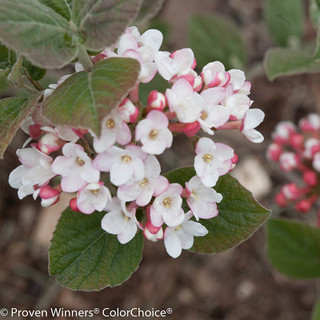Coneflowers provide dependable color and attract pollinators while being easy to grow. The tall flowers of Echinacea feature brightly colored petals that surround a large, brown seed cone. Coneflowers thrive in zones 4 through 9 and add height to a mixed bed or border. The tall blooms are often used in a meadow or prairie garden but can also look at home in a more formal garden space. These sun-loving herbaceous perennials require hardly any care once they become established.

Include coneflowers in a mixed planting to introduce different colors, heights, and textures. Coneflower plantings expand with time, so give these plants room to spread out or be ready to divide them every few years. Some excellent companion plants for coneflowers include bee balm, phlox, viburnum, sedum, and butterfly bushes.
Shrubs To Plant With Coneflower
The fragrant, cone-shaped flower clusters of butterfly bushes bloom from spring until fall for a long season of color and texture. Butterfly bushes can grow as small as 3 feet tall or as big as 10 feet tall, so feature them near the back of a bed and move coneflowers in front.
Viburnums come in all shapes and sizes, so select a variety that complements your landscape; luckily, they all look lovely when planted near coneflowers. Flowering viburnum can be grown as a shrub or small tree. The white or pink flowers bloom in the spring, but the foliage will stay in place throughout the summer and fall.
Perennials To Plant With Coneflower
The tall flower spikes of salvia and veronica are often dotted with tiny purple or white blooms and work nicely against the larger, circular coneflower blooms. A favorite of bees, salvia and veronica start blooming in late spring, and with some well-timed pruning, they will continue to bloom alongside coneflowers through the summer. Phlox is another excellent companion for coneflowers. Phlox can be low and spreading, medium, which provides mid-level color, or tall, providing a colorful backdrop. Whatever type of phlox you choose to feature, expect summertime flowers.

Photo by Mark Wordy, cropped, Flickr, copyright CC BY 2.0
Sneezeweed, also known as helenium, is a flowering perennial that produces daisy-like blooms that measure several inches wide. The textured flowers attract a host of pollinators while echoing the bloom shape of coneflowers. These clump-forming plants are similar in size to coneflowers, so plant them side by side so one plant does not obstruct the view of the other.
Annuals To Plant With Coneflower
Feature annuals in a mixed bed alongside perennials like coneflowers, so you can mix things up without completely starting over each spring. Marigolds, sun-loving coleus, cosmos, and purple fountain grass pair well with coneflowers. Feature these bushy annuals around the base of the coneflowers to create layers of color and texture. Deadhead the marigolds throughout the summer to keep these plants blooming into fall.
Best Companion Plants For Coneflower in Containers
Sedum is a succulent that, much like coneflowers, requires minimal care and continues to come back each spring. Plant coneflowers in the center of a container and fill in the outer portion with low-growing sedum. The thick, fleshy sedum foliage will grow around the basal leaves of the coneflowers, and the mass of sedum flower clusters will bloom in late summer or early fall, around the time the coneflower blooms start to fade.
Plants Not To Grow With Coneflower
Plants that have drastically different care needs are unsuitable companions for coneflowers. Coneflowers are very hands-off once they are acclimated, but they need a spot with full sunlight. Low-light plants like hostas, ferns, and bleeding hearts do not pair well with coneflowers. Plants that prefer damp, marsh-like conditions, like swamp milkweed, lobelia and sedge, are also not likely to work well with coneflowers because the conditions that will help one plant thrive will not support the other.
Best Plants To Grow With Coneflower
Coneflowers are beautiful alone, but they look even more impressive when combined with flattering companions. Select plants that bloom earlier or later to ensure there are always flowers to admire and a food source for pollinators. Experiment with different colors, textures, and heights to create a full and dense planting. Some strong choices include viburnum, salvia, yarrow, sea holly, phlox, cosmos, and sedum. These plants are all easy to grow in full sun and provide high contrast against coneflower blooms. Lastly, select coneflower companions with the same care requirements, so all plants can easily coexist in the same space.
 |
Author Alison Cotsonas - Published 08-14-2023 |





